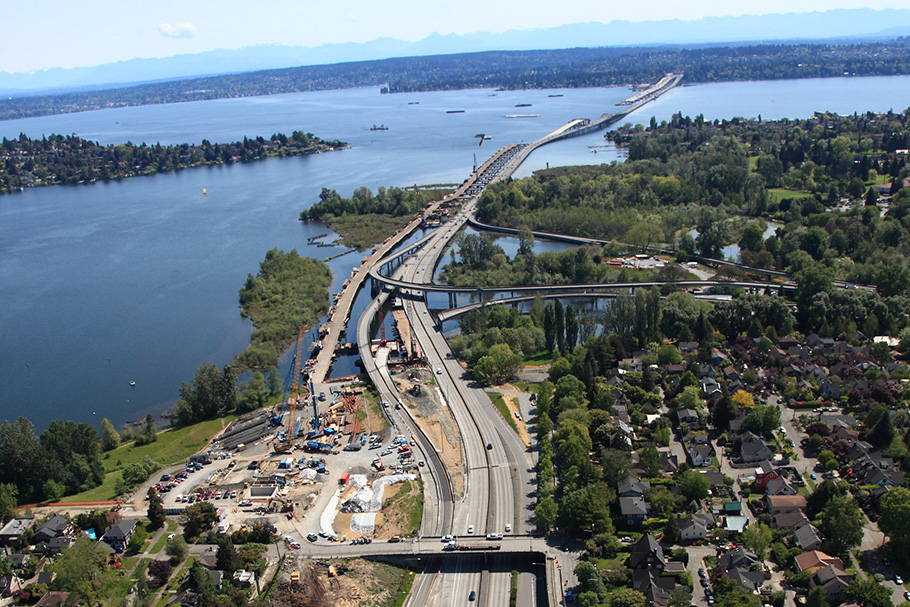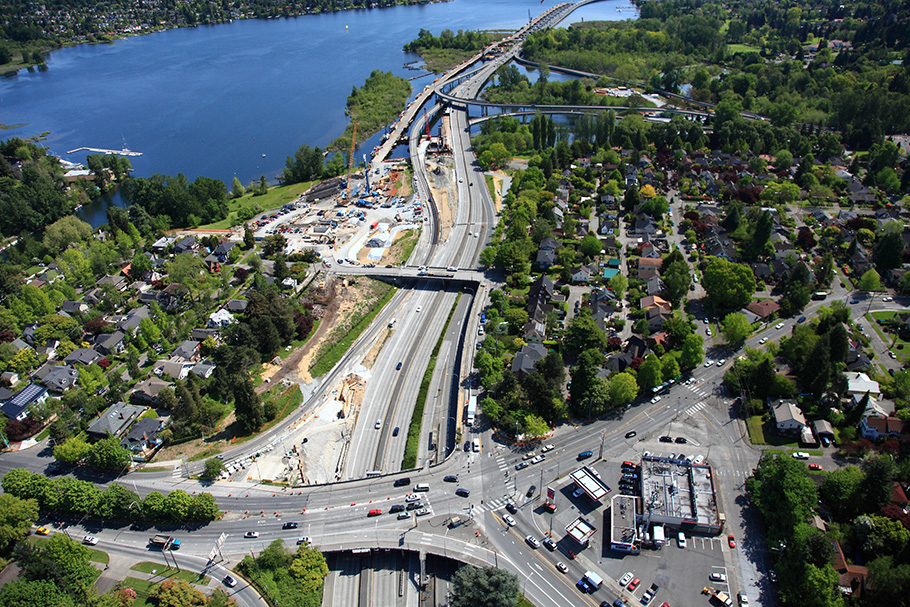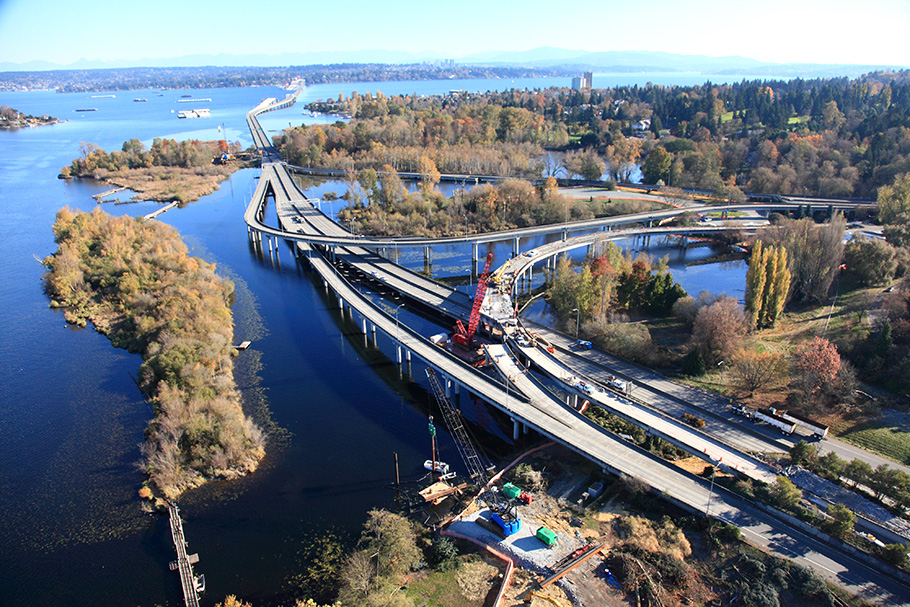Building the State Route 520 West Approach Bridge North
Flatiron is building the west approach to the new SR520 bridge in Seattle for the Washington State Department of Transportation (WSDOT). The project is part of the SR 520 Bridge Replacement and HOV Program. Work includes building two new west approach bridges – one each for eastbound and westbound traffic – that will connect the new floating bridge to the Montlake area. This new bridge will replace the existing approach bridge that is vulnerable to a catastrophic earthquake and will complete the bicycle and pedestrian connection across Lake Washington with a new, regional shared-use path.
Work includes construction of a new 6,000-foot, 41 span precast girder bridge founded on large diameter CIDH piles primarily over water. This new bridge will carry westbound vehicles from the new floating bridge to Montlake Avenue. Eastbound traffic will continue to use the existing west approach bridge until a new West Approach Bridge South is built. All bridge structures will be built to modern earthquake standards and will support a six-lane corridor with a bicycle and pedestrian path that connects to local and regional trails. Additional project benefits include environmental improvements such as a new Arboretum trail, a public park north of SR 520, and a stormwater treatment facility.
Construction of the West Approach Bridge North began in July 2014. Prior to starting construction of the permanent bridge, Flatiron built a temporary work bridge. Nearly a mile long, this structure served as a platform for crews to store materials and deploy equipment for constructing the permanent bridge. In February 2015, Flatiron began installing the first casings for the permanent bridge structure. Ramp demolition, installation of casings, shaft installation, and column installation are currently ongoing. The project is expected to be completed during the summer of 2017.
Construction of a new 6,000-foot, 41 span precast girder bridge
Structures will be built to modern earthquake standards
Six-lane corridor with a bicycle and pedestrian path
Environmental improvements include a new Arboretum trail, public park, and stormwater treatment facility




